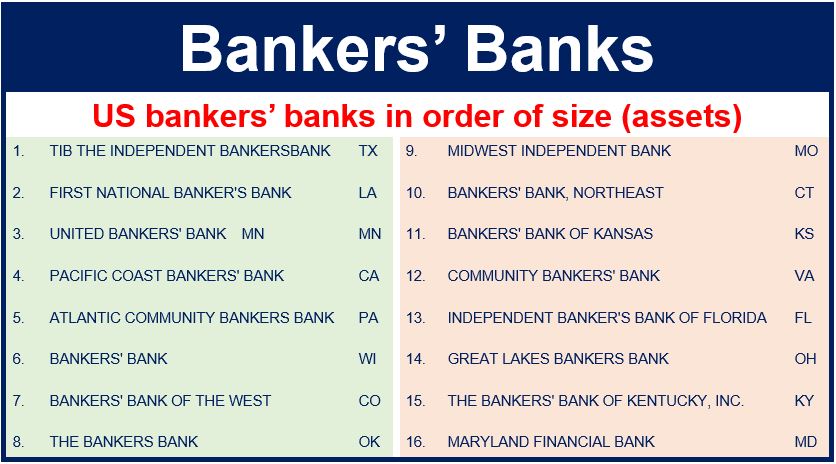Banker’s bank – definition and meaning
A banker’s bank is a US bank that provides financial services to community banks. Several community banks own the banker’s bank. This type of bank, however, provides services just to community banks rather than companies or individuals.
Thanks to bankers’ banks, community banks receive a wide range of services. Community banks receive the services that would only be available to the giant financial institutions.
The community banks can then offer these services to their customers. In other words, smaller banks can subsequently compete more effectively with the giant operators.
United Bankers’ Bank (UBB), which started operating in 1975 in Minnesota, is America’s largest bankers’ bank.
According to UBB, its vision is:
“(To) level the competitive playing field with systems banks by providing community banks with a full range of innovative correspondent services secure in the knowledge that nobody would ever come after their customers.”
Today, there are sixteen bankers’ banks in the United States. These banks provide services to over 48 states. Banker’s banks do business with more than six thousand community banks.
TIB (The Independent Banker’s Bank) in Texas is the country’s largest bankers’ bank. TIB serves more than 1,800 banks in forty-six states. It also serves banks in Guam and Bermuda,
The central bank is the banker’s bank
The term may also refer to a country’s central bank. Commercial banks maintain a current account with the central bank. Commercial banks also have access to very short-term loans.
Examples of central banks are the Federal Reserve System in the US or the Bank of England in the UK. Central banks provide services to commercial banks in the same way our banks provide services to us.
According to Merriam-Webster, a bankers’ bank is:
“A bank that deals only with other banks,” or “a central bank (such as a U.S. Federal Reserve bank or the Bank of England).”


 (
(